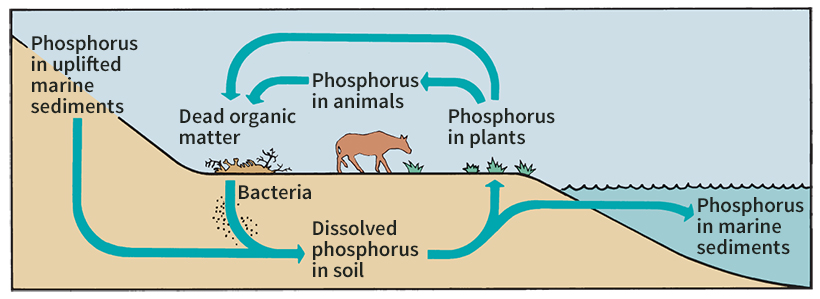Phosphorus << FOS fuhr uhs >> cycle is the circulation of phosphorus among the rocks, soil, water, and plants and animals of the earth. Human beings and all other organisms must have phosphorus to live. In nature, most phosphorus occurs in phosphate rock, which contains phosphate ions combined with calcium, magnesium, chlorine, and fluorine. Phosphate rock forms as sediments at the bottom of the oceans. Some of these sediments are eventually returned to land by movements of the earth’s crust.

The weathering of phosphate rock that has been elevated above sea level supplies phosphates to the soil. Plants absorb dissolved phosphate from the soil. Human beings and other animals obtain phosphorus from the plants or animals that they eat. After plants and animals die, certain bacteria break down the dead organic matter and return phosphorus to the soil. Organisms may recycle phosphorus many times before it is finally washed to the sea and is trapped once again in marine sediments.
Human beings accelerate the weathering process by clearing forests and many cultivated areas that protect land from erosion. People also accelerate the phosphorus cycle by mining phosphate rock for the manufacture of such products as detergents and fertilizers. The use of these products greatly increases the rate at which phosphorus returns to the sea. Large quantities of phosphate that come from detergents and fertilizers contribute to water pollution. See Phosphate .
